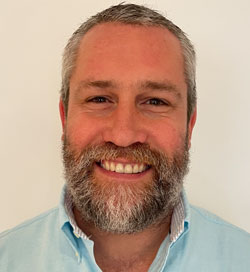According to CEO Tim Hollingsworth, Sport England wants to get everyone active: “We know certain groups – such as women, people with long-term health conditions, disabled people, people from ethnically diverse communities and lower socio-economic groups – are more likely to be inactive. We can only innovate and tackle inequalities effectively by thinking about long term change.”
As a result, Sport England and UK Active have signed a five-year partnership agreement to tackle these inequalities, backed by a £5.25m funding package.
Currently, those from the BAME community, the lower socio-economic groups, people with disabilities and deconditioned people are under represented in gyms. They are missing out on the mental and physical benefits of activity: inactivity is in the top 10 causes of ill health in the UK and the failure to engage widely with these populations is limiting the gym industry’s penetration.
Barriers for not engaging are frequently complex, but commonly include a lack of representation, cost and a feeling that the gym environment is not for people like them. It is very important for operators to show these prospective members that you respect them and welcome them to your facility.
This includes using diverse imagery across all marketing channels, employing people from these communities and consulting with them about what they want and then following through so they feel comfortable at your facility.
Upskilling your staff, including discrimination training, is something to aim for. Most importantly, as you move towards a more diverse and inclusive environment, steer clear of tokenism and falling into patronising behaviour.
Race matters
According to Sport England research, black, Asian and Chinese adults are the least active ethnic groups. People of colour lack representation in the health and fitness industry and even when they are employed there is not necessarily a culture of inclusion.
Swimming in particular has been called out as failing to meet the needs of black people. Research by the Black Swimming Association found that 95 per cent of black adults, 80 per cent of black children, 93 per cent of Asian adults and 79 per cent of Asian children in England either can’t or don’t swim.
Between 2016 and 2019, of the 10 per cent of athletes funded by UK Sport who were of Asian, black and mixed heritage, only 1 per cent were black. Among the aquatic workforce only 3 per cent of lifeguards are of African, Caribbean and Asian heritage. There is no representation at senior leadership or board level.
According to Danielle Obe, chair of the Black Swimming Association, inclusion and diversity in aquatics can’t be taken forward without tackling inherent systemic and institutional inequalities: “This isn’t a simple boardroom activity or quick fix, neither is it a one-size-fits all approach, the sector must take a systematic, long-term and integrated approach to change.”
Obe says change has to start with community engagement, research and collaboration and calls for operators to appeal to this cohort through direct community engagement, messaging campaigns, research and collaboration with the BSA.
The industry is aware of the problem. Last year, the Swimming Teachers’ Association (STA) and UK Active commissioned the Inclusion in the Swimming Industry report. This found swimming teachers believe those being excluded include people from low socio-economic backgrounds, some religious groups, ethnically diverse communities and people with disabilities.
STA chief executive Dave Candler says the organisation is deeply committed to change: “This study was important for us to understand perceptions, incentives and motivations and how, as an organisation, we can represent and support the industry at this time of increased introspection. The study identifies areas for improvement – the crucial elements for furthering the inclusion agenda.”
























































